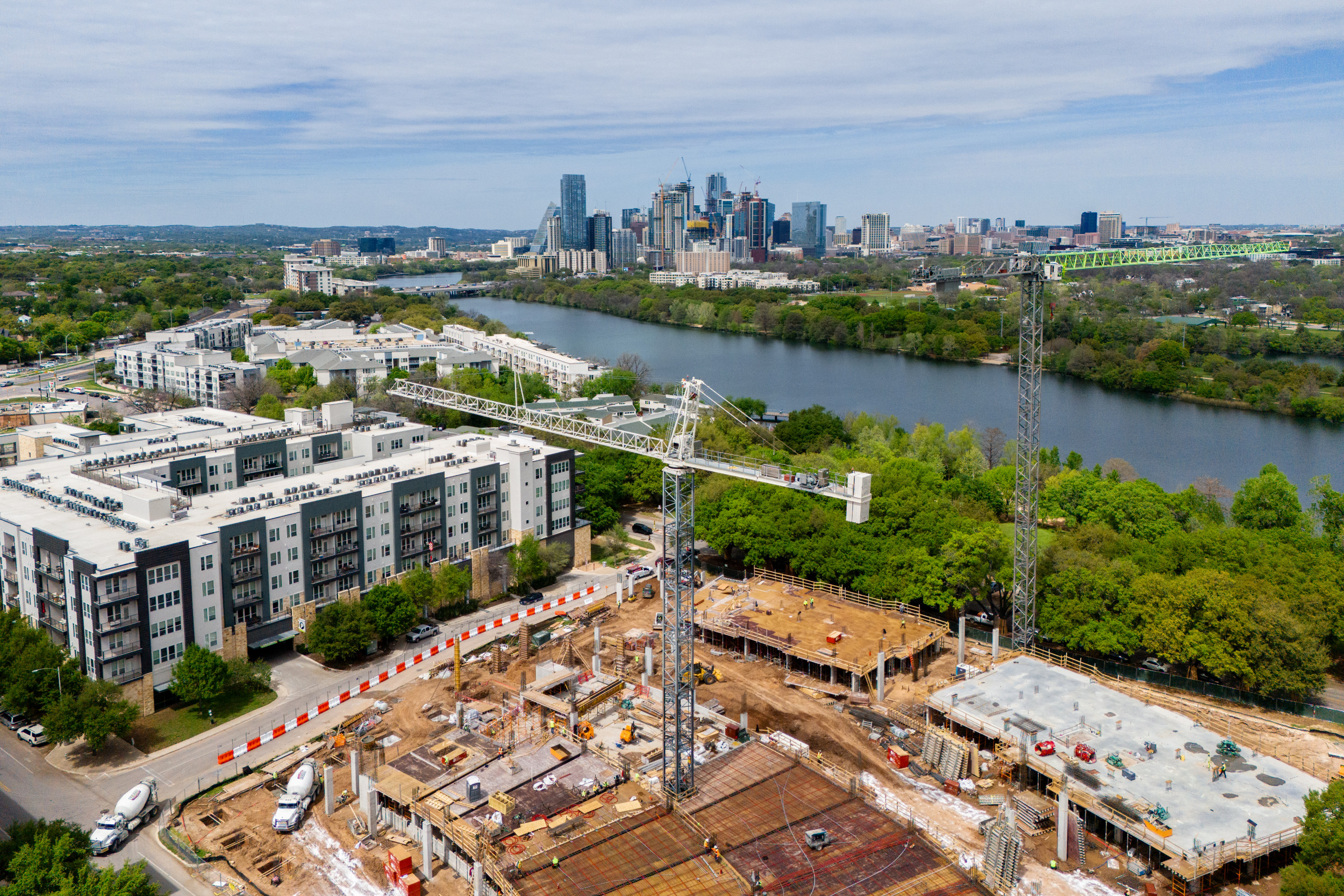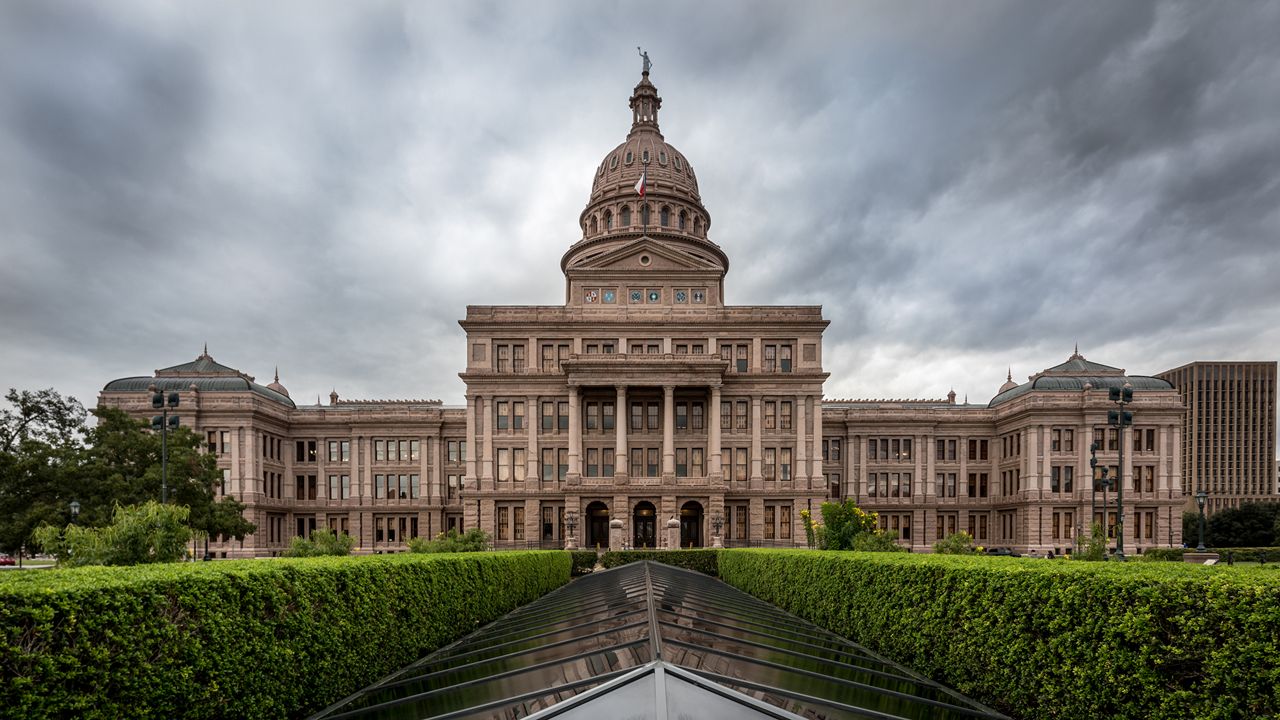Austin, TX
Driverless cars are multiplying on Texas roads. Here’s what you should know.
/cloudfront-us-east-1.images.arcpublishing.com/gray/GKNPFCD7QJFR7NWFSMYRL2OEX4.jpg)
AUSTIN, Texas (The Texas Tribune) – Autonomous vehicles, or AVs, are here. Tribune journalists took a ride in one recently and answer the biggest questions about who’s driving the driverless trend and how the state regulates them.
It’s 8 p.m. in downtown Austin, and the electric cars silently exit the parking lot one by one — but no one is behind the wheel of any of them. The Cruise depot is full of people preparing the cars for another night of road testing.
There are about 125 autonomous vehicles, or AVs, operating in Austin, according to a city Transportation and Public Works Department memorandum.
It’s unclear how many are operating statewide. According to the Texas Department of Transportation, multiple companies are testing and operating driverless vehicles “as passenger, freight and personal delivery devices” all over the state. The list includes Kodiak, Aurora, Waabi, Torc, Plus.AI, Gatik, Cruise, Volkswagen, Waymo, Starship, Kiwibot, Coco, Refraction.AI, Nuro, and Clevon.
Here’s what you need to know about driverless vehicles in Texas.
When did driverless vehicles become legal in Texas?
Senate Bill 2205, which took effect in September 2017, set the ground rules to regulate AVs in the state.
State Sen. Robert Nichols, R-Jacksonville and chair of the Senate Transportation Committee, said that around six years ago, “pretty much all of the car manufacturers that you can imagine (came) saying we do need legislation because they want to invest hundreds of millions of dollars in the state of Texas related to autonomous vehicles.”
After discussions with the Texas Department of Transportation, the Texas Department of Public Safety, the Department of Motor Vehicles, auto manufacturers and insurance companies, Nichols said he worked with Sen. Kelly Hancock, R-North Richland Hills, who sponsored SB 2205.
“When we saw the boom in AV technology on the horizon,” Hancock said, “we began a series of stakeholder meetings to design legislation that would keep government from getting in the way of transportation innovation while also providing a regulatory framework with public safety at its core.”
The bill included a key provision aimed at boosting the industry and speeding development of the technology in Texas: It barred cities from getting involved.
“Simply put, cities in Texas cannot regulate autonomous vehicles,” Richard Mendoza, the interim director of Austin’s Transportation and Public Works Department, wrote in the Sept. 1 memo.
Collin Moffett, a senior transportation planner at the North Central Texas Council of Governments, said that if every city created different regulations, the industry could face serious obstacles.
“So the fact that the state provides consistent policy across the state of Texas, I think is definitely favorable and accelerates the development of this technology,” Moffett said.
Do AVs need to be licensed in Texas?
Yes. By law, autonomous vehicles must be inspected and licensed, but the procedures can be different from those for regular cars.
According to the Texas Department of Public Safety, “if a vehicle is truly automated a licensed human operator is not required to be in the vehicle and the vehicle itself is considered to be licensed to drive. In such situation, the owner of the vehicle is considered to be the operator for the purposes of assessing compliance with traffic laws.”
But a brief published by the Texas A&M Transportation Institute in 2017 noted that under the state law regulating AVs, “there are no licensing or registration requirements for verifying the capabilities of the automated driving system.”
How do driverless vehicles work?
An AV is equipped with sensors — cameras, radar and lidar (light detection and ranging) — that provide a complete view of the world around it. It also uses GPS to track its location. The data from these sensors feed the car’s artificial intelligence brain in real time, enabling it to make decisions such as choosing a route, identifying traffic lights, road signals and objects.
What’s it like to ride in an AV?
A Texas Tribune reporter and photographer requested a ride through the Cruise mobile app, and got into “Cookie” — that’s the name of the car that picked us up.
Painted orange and white, the sedan had room for five people in back. On the roof, it had a mounted structure for all the cameras and sensors.
/cloudfront-us-east-1.images.arcpublishing.com/gray/XPDJU4Q6INFCJDN5HU3WDF7B7M.jpg)
/cloudfront-us-east-1.images.arcpublishing.com/gray/356EYGEIE5EADMDJ6J77UJXC3I.jpg)
Cruise was founded in 2013 in San Francisco, where it offers driverless ride service through a mobile app. The company also operates driverless ride hail service in Austin between 8 p.m. and 6 a.m in downtown, Central and East Austin.
“Welcome,” a pre-recorded woman’s voice said as we got in, then asked us to fasten our seat belts. The recording continued: “Let’s cruise! For safety we are recording video, but no audio.” The interior looked like a normal car, except for a transparent plastic partition that separated us from the front of the vehicle.
Screens hanging on the backs of the front seats showed a digital map with the route that Cookie would follow to our destination and allowed us to select up to eight different radio stations. The steering wheel turned on its own as the car moved through downtown Austin traffic. The AV frequently drove slower than the vehicles around us, but at times it took corners very quickly.
At one point, the car appeared to detect a nonexistent collision. An alert appeared on the screens hanging from the front seats, the car stopped for a moment, then we heard a human voice coming through a speaker, asking if everything was okay.
Have AVs been involved in accidents?
Yes.
“On 9/18, between 11:19 p.m. and midnight, resident’s car was struck by an autonomous (driverless) Cruise vehicle traveling in the 3rd lane from the north curb as it merged in front of him … the vehicle left the scene of the accident without stopping,” states a report about a September accident received by the Austin Transportation and Public Works Department.
In another report from Sept. 14, a driver who witnessed a near-miss involving AVs reported to the department that he and his wife were stopped at the intersection of E. 11th St. and the Interstate 35 frontage road when a large group of emergency vehicles raced past them.
“Vehicle traffic yielded to the emergency vehicles, until the light turned green for East/Westbound traffic, and we watched as two Cruise AVs pulled directly out into the oncoming emergency vehicles,” the report says. “State Trooper SUVs were easily going 60-70 mph and having to [brake] and dodge the Cruise AVs as they putted through the intersection. This is absurd and unacceptable.”
Another report stated that a Cruise AV crashed into a brick wall on Austin’s West Avenue on Aug. 23 and because it didn’t have a steering wheel, there was no way for emergency personnel to quickly move it. A tow truck was called.
These complaints are among 33 that the Austin Transportation and Public Works Department received this year from July 8 to Sept. 25. The Texas Department of Transportation said it is not required to track AV incidents statewide.
Cruise said that its cars have driven more than 4 million driverless miles without any life-threatening injuries or fatalities. When benchmarked against human drivers in a comparable driving environment, Cruise AVs were involved in 65% fewer collisions overall, a company spokesperson said.
At a national level, the National Highway Traffic Safety Administration gathers data about crashes involving vehicles using automated driving systems.
/cloudfront-us-east-1.images.arcpublishing.com/gray/NUA6D7JKBFDPDBXM45V7OTVV6Y.jpg)
Between July 2021 and Aug. 15 of this year, the NHTSA documented 382 crashes involving autonomous vehicles. California led the nation with 66% of reported accidents, followed by Arizona with 15%, Texas with 6% and Florida with 4%.
In roughly 85% of the accidents, no injuries were reported, and just one serious injury requiring hospitalization or emergency treatment was reported during the two-year period.
In recent months, people have posted photos and videos on social media of Cruise AVs stopped on Austin streets, blocking traffic. In some cases police officers responded to direct traffic around the vehicles until company employees arrived to move the stranded vehicles.
Who is responsible for an AV accident?
The Texas Transportation Code states that the owner “of the automated driving system is considered the operator of the automated motor vehicle solely for the purpose of assessing compliance with applicable traffic or motor vehicle laws, regardless of whether the person is physically present in the vehicle while the vehicle is operating.”
It’s unclear whether any owner of an automated driving system operating in Texas has been fined for any incident. The state agencies contacted for this story and the Austin Public Works and Transportation Department said they didn’t have information about fines or referred the Tribune to another agency.
Will driverless vehicles compete with human drivers?
Moffett thinks that in the next few years, driverless vehicles will be used to provide services such as transporting people with disabilities and offering transportation and delivery services in sparsely populated areas.
“How it will affect human drivers in the long run, I really can’t say,” he said. “I think it’s too early to tell.”
Nichols, the state senator, said, “people shouldn’t be afraid of automation, because it increases productivity. Anytime we step into a new area there is always concern. I have my concerns. But we need to work this out.”
Disclosure: Texas A&M Transportation Institute has been a financial supporter of The Texas Tribune, a nonprofit, nonpartisan news organization that is funded in part by donations from members, foundations and corporate sponsors. Financial supporters play no role in the Tribune’s journalism. Find a complete list of them here.
The Texas Tribune is a nonprofit, nonpartisan media organization that informs Texans — and engages with them — about public policy, politics, government and statewide issues.
Copyright 2023 The Texas Tribune. All rights reserved.

Austin, TX
Rents in the Austin area have been falling for a year

To draw the picture of Austin rent prices over the past several years is to trace a dizzying mountain — up, up, up. And then a slope. A small slope, but a slope. Down. Not up.
For the past year, the average price of rent in the Austin area has been falling. Rent prices have decreased by about 6% year over year. The average monthly rent is now $1,528 for an apartment any size, down $100 a month from last year.
According to data from Zillow, this is the longest sustained drop in rent prices in the past decade.
“It’s bad for landlords and it’s great for tenants,” said Jake Wegmann, a real estate professor at the University of Texas at Austin. “We should be happy about this.”
The cause? A surge in apartment building and a drop in the number of people moving to the area.
“During the pandemic we saw all of this demand and developers said, ‘We need to build,’” said Ali Wolf, chief economist at Zonda, a company that tracks home construction data.
Tens of thousands of people moved to Austin in the early years of the pandemic. Many could work from home, while others could afford to leave shared living situations and look for their own apartments. In response, rent prices rose at an incredible pace. To developers this indicated a need: more homes. In 2022, developers started building about 40,000 new apartments, more than they had in any subsequent year.
While the population surge that defined Austin in 2020 and 2021 has since slowed, tens of thousands of new apartments are still opening. That’s because of the nature of construction; typically, several years pass between breaking ground on a new building and opening apartments to renters.
What typically happens when developers start building a significant number of new rental homes is that prices drop, Wegmann said, but often only among the most expensive apartments. But there are so many new apartments in Austin that prices are falling across a spectrum of buildings, from apartment complexes with gyms and pools to buildings built half a century ago and beset with much-needed repairs.
The average rent price for these older apartments is down 9% over the past year, according to data from the firm MRI Software.
“This is like adding chairs to the music chairs game,” Wegmann said. “You end up with more and more empty chairs, which give people looking for apartments more choices. Their landlords have to cut rents to fill apartment buildings.”
But both Wegmann and Wolf cautioned that falling rent prices does not equate to more affordable rent. In the year leading up to falling rents in Austin, prices surged by nearly 20%.
A study from the Harvard University Joint Center for Housing Studies found that in 2022, nearly half of all renters living in Austin and the surrounding counties spent more than a third of their income on rent, a metric many experts agree is unaffordable. Rent prices in Austin began falling a year later.
As for whether rents could continue to drop, Wolf said yes.
“This one feels like to me one of the easier crystal balls to answer,” she said. A large number of new apartments are still under construction, and when they open to renters that means more supply of housing. “As we look at the next year, [falling rents are] almost a guarantee.”
But as rents drop, so does the income for developers and the incentive to build. Wegmann said builders are already halting some projects, a trend likely to continue.
“We’re gonna certainly see a retrenchment,” he said. “We’re going to see way fewer projects starting over the next couple of years … That’s capitalism!”
Austin, TX
Whataburger sues North Carolina chain for trademark infringement

AUSTIN, Texas — Whataburger is suing a North Carolina-based restaurant chain with a nearly identical name for trademark infringement.
Whataburger accuses “What-A-Burger Number 13” in North Carolina of infringing on its federal trademark, breaching contract, and committing unfair and deceptive trade practices.
ALSO| Austin’s Zilker Eagle mini train opens with new engine, new route and free rides
The defendants claim to have started using the name around 1969, more than 10 years after the Texas chain’s first copyright registration.
The Texas Whataburger claims to have signed a co-existence agreement after announcing plans to open in the Tar Heel State in 2022.
However, Whataburger says conditions in that agreement were continuously violated.
Austin, TX
UT Austin, one of the city's largest employers, is eliminating most remote work

The University of Texas at Austin will require “almost all” staff members to return to working on-site, full-time ahead of the fall semester.
In an email to the campus community Wednesday, UT President Jay Hartzell said leaders of individual colleges and schools will finalize logistics by early July, and the policy will fully take affect by Aug. 19 — the week before fall classes start.
“Staff members can most effectively serve our students, faculty, fellow staff members, and other stakeholders when working together in an environment that fosters collaboration, innovation, availability, and reliability,” Hartzell said in the email. “We are here because of our students, and your consistent presence will help provide a more complete and engaging learning experience for students throughout campus.”
Some roles will still be eligible for remote or hybrid work based on what department leaders decide. Hartzell didn’t share specifics, but said the roles “will be characterized by observable productivity; work that is transactional, internal, or service related; or functions that require high levels of individual time to perform.”
Mike Rosen, a spokesperson for UT Austin, said in an email that “certain accounting, payroll, or IT positions” could be examples of jobs eligible for hybrid or remote work. Rosen said UT Austin doesn’t have a tally of how many staff members the new policy will affect, but that many employees have already returned to full-time, in-office work.
UT Austin has 21,000 faculty and staff members, according to its LinkedIn. That makes it one of the largest employers in the area, according to data from the Austin Chamber of Commerce. KUT staff are also employees of UT Austin.
One UT staff member, who asked to remain anonymous out of concern that her coworkers could experience retaliation, said she thinks returning to the office full-time is unnecessary for her position. As an academic adviser in the College of Liberal Arts, she works directly with students.
“Most of my job is with students over Zoom,” she said. “A lot of students … they commute to UT, they have jobs, they have other things going on outside of school. Not everybody is able to stay on campus and meet with advisers for whatever they need.”
Her team currently works three days in office, two days remote during the fall and spring semesters. After receiving Hartzell’s email Wednesday, she said she got another email from her team’s HR representative specifying that she will now need to work four days in person, one day remote every week while school is in session.
The UT employee was already planning to quit her job for personal reasons before the most recent announcement, but this has cemented her decision.
“I think everybody’s aware that it’s very expensive to live in Austin,” she said. She has worked in multiple positions at UT since 2019 and now makes $53,000 a year. “The university is also fairly expensive [for] anyone who commutes to UT …. We have to dedicate even more of our time to getting to campus, paying to get to campus and continuing to do these jobs where we’re very underpaid for the amount of work that we’re expected to carry out.”
-

 Fitness1 week ago
Fitness1 week agoThe five simple exercises that are crucial in midlife
-

 Politics1 week ago
Politics1 week ago5 things to know about Hunter Biden trial
-

 World1 week ago
World1 week agoChina denies fuelling Russia-Ukraine war tensions, says it supports peace
-

 Movie Reviews1 week ago
Movie Reviews1 week agoFilm Review: I Used To Be Funny offsets its humorously-adjacent title with a dark, heartbreaking temperament. – The AU Review
-

 World1 week ago
World1 week agoEconomy, migration: Voters' main concerns ahead of elections
-

 News1 week ago
News1 week agoWhat is D-Day? How the Normandy landings led to Germany’s defeat in World War II | CNN
-

 Politics1 week ago
Politics1 week agoTrump campaign accelerates vetting of potential running mates
-

 Politics1 week ago
Politics1 week agoHunter Biden trial enters 3rd day with cross-examination of FBI agent




















